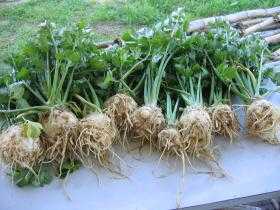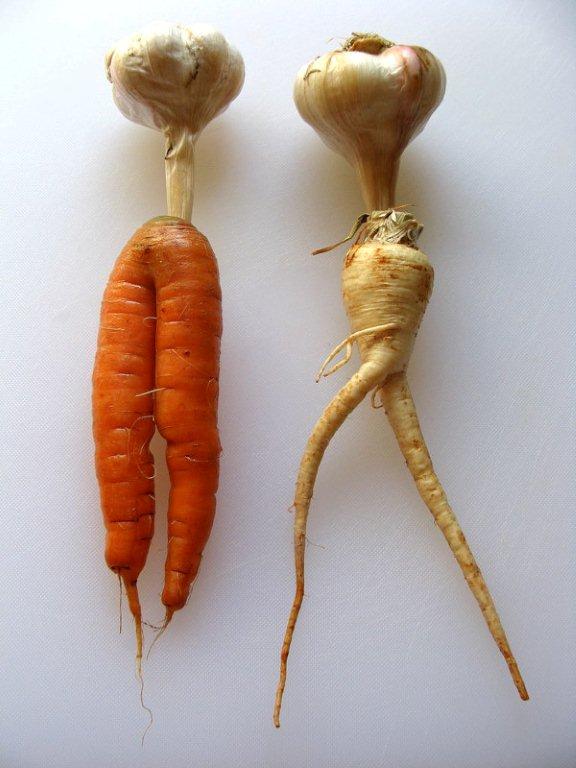
Last week we received a new stock of products from “Sindyanna of Galilee.” In addition to their renowned organic olive oil and their outstanding za’atar, we now have a renewed stock of their carob syrup, plus sweet, rich almond spread with techina and carob syrup – a Galilee spread sweetened with honey and a silan-sweetened vegan spread.
For those yet unfamiliar, “Sindyanna of Galilee” is a social enterprise devoted to creating social change by connecting Arab and Jewish women who work the earth and produce olive oil and a host of other products. All profits are reinvested into planting and cultivating high-yielding olive groves, promoting fair employment for Arab women, operating a Visitor’s Center and a women’s artisan workshop, creating economic opportunities, and fostering cooperation between Jews and Arabs.
Sindyanna of Galilee’s olive oil is truly outstanding, clinching medals and quality titles in international and local competitions. As mentioned, the olive oil is joined by other distinctive traditional local products such as za’atar, carob syrup and almond spread. Add these extraordinary products to your Chubeza box today via our Order System.
__________________________________________
The little prince crossed the desert and met with no living soul except one flower.
“Where are the people?” the little prince asked politely.
“People? I saw them, several years ago. But one never knows where to find them. The wind blows them away. They have no roots, and that makes their life very difficult.”
– Antoine de Saint-Exupéry, from The Little Prince
Over the past few weeks, we’ve been enjoying prolific rains hyphenated by good, generous portions of sunny days. The earth still needs to quench its thirst, and we’re not ready to part too early from the winter rains. We are only in the middle of winter, with another two months or so in which to happily, hopefully be doused in blessed rains upon our earth. But at this time when we prepare for spring planting, sunny days are also of critical importance to allow the earth to dry up from the rains, prepare it, and sow and plant what is supposed to begin to grow towards Spring. Last week, during the short Monday through Wednesday respite-from-the-rain, we managed to plant pumpkins, dolarit, and melons, and to sow onions, carrots, beets and turnips. When this week turns dry and sunny, we hope to continue our planting and sowing, with an eye already gazing towards the spring and summer seasons.
One of the vegetables that signals the middle of winter for us is the parsley root, which takes its good time to reach maturity. Though we seed it in the beginning of autumn, it is only ready for harvest in mid-winter when its arrival gladdens our hearts. The parsley root then finally shows up to join her good friend and distant cousin the celeriac, which we plant and do not seed, thus he arrives earlier.
This week we turn the Newsletter spotlight to these two spectacular roots. Although concealed from view, when they finally come out of hiding, it’s time to bring out the soup pot and celebrate (and not only with soup)!

Both the parsley and celery roots belong to the umbelliferae family (along with the carrot, coriander, dill, fennel and others). They perform a double duty for your soups: they’re yummy and filling to munch on, plus they add fragrance and flavor. Each of these roots has a green, stalk-like and faster growing “twin sister” with stems above the ground (leaf celery and parsley greens), which grow faster and assume different roles in the kitchen. This week we’ll go a few inches below the surface and say a few words about each member of this impressive root duo.
Of course, every plant needs both roots and leaves, and each component works in opposite directions. The roots draw up the nutrients from the earth, and the leaves act as conduits to transform sunrays into available energy for the plant. This is why all parsley and celery have leaves and a root, but root celery and leaf celery, as well as parsley root and parsley leaves (and you can add the beet root and Swiss chard greens or beet greens to the bunch) are two different varieties of the celery/parsley/beet plants, and not simply different parts of the same plant.
Every parsley leaf boasts a root, and every parsley root has leaves, but the leaf parsley is content with modest, thin roots and does not develop a thick root, while the parsley root has thicker and rougher leaves. The varieties of leaf parsley and parsley root were developed over the years by farmers in the ongoing process of selecting preferred species and cultivating them. Some farmers kept seeds from year to year from the plants with the biggest leaves, yet the mildest or best taste or highest resistance to extreme temperatures or pests. Other farmers kept the seeds of plants whose roots thickened and lengthened. Thus, the distinction of the species was born – differentiating the parsley grown for its leaf use, and the variety we call “parsley root,” a savory delight to add to the soup.
The flavor of parsley root has been described as a combination of celery, carrot, parsley and turnip. In short, something distinctive and indefinable. Best to just go ahead and taste it! Parsley root is somewhat sweet, but also earthy in flavor (as are most roots). For those who are familiar with the parsnip (a white, elongated root, confusingly similar in length), note that the parsley root is not a parsnip! Though it looks a lot like the parsnip, the parsley root’s taste is very different and less sweet.
Leaf parsley originated in the European Mediterranean region, but the root was probably cultivated more in northern Europe, perhaps due to the roots’ ability to be stored for longer periods during that region’s harsh winters. The earliest mention of the parsley root is in 16th century Germany. Other names for the root attest to their geographic connections: “Dutch Parsley” and “Hamburg Parsley.” Because it was so loved in the cold European countries, it earned the nickname “Petoushka.”
Root parsley only grows in wintertime. Unlike its sister which also thrives in summer – even under the scorching Israeli sun – the root parsley hates heat, and thrives in winter’s low temperatures and high humidity. It also needs a lot more time to reach maturity. The roots now appearing in your boxes were seeded in autumn and have been growing underground for almost five months now (leaf parsley is ready in two to three months).
The main challenge in growing root parsley is the thinning-out process. This parsley’s elongated roots need space to grow and fatten up, so it’s crucial to thin the bed which was manually seeded and thus grow plants in dense proximity. By thinning, we remove some of the young sprouts, allowing their siblings some extra “growing space.”
This year we decided to thin out the parsley a great deal more in an attempt to grow larger roots than what we’re accustomed to. Instead of the usual space of approximately one centimeter between each plant, we are now leaving a lot fewer plants but making a lot more space for the remaining plants, some 5 cm between each root. We are happy to report that though several weeks remain before we can harvest them, the parsley roots are chubby and far more attractive than those we’ve been harvesting till now.
Both stalk celery and celeriac are domesticated species, meaning that they were cultivated over hundreds of years by farmers who sought celery’s elongated and thick, crispy leaves, or alternatively a precisely round root. The farmers who preferred the thickened root selected from season to season only those varieties which produced the chubbiest, largest root. The stalks in these plants remained short and thin, with a far more pronounced taste than the mild, refined flavor of stalk celery. Often the stems are hollow, like a straw. When you look at a bed of stalk celery alongside one of celeriac, it’s easy to identify them by the different way the leaves grow. The former are erect and long, the latter chubby and spread out.
Celery is a plant which grows slowly. It starts with its teeny, tiny seeds which take their time, three to five weeks, till they sprout. After their diminutive sprouting, they need at least another two months of devoted care in the warm, pampered temperature of the plant nursery. Only after three or more months are they ready to be planted. We receive the young’uns when they’re approximately three months old and ready to be lifted out of their black plastic cubes and placed in Chubeza’s fertile earth.
Celery thrives on fertile earth and lots of water. As a plant which originated in the swamps, it likes humidity in the soil and also in storage, which is why it thrives in wintertime in Israel. The Israeli summer is difficult and dry for the crisp celery plant. After three months in the nursery, it needs another two or more months to reach the prime age at which its leaves and stems can be harvested. The strain which develops a thick root is even more patient, waiting another month under the cozy cover of Mother Earth and refusing to be coaxed out of its warm bed into the cold, raging winter. A simple calculation leads to the conclusion that the lovely celeriac visiting your boxes this week began its growth from seeds some six months ago!
And even when their time has come to ripen and be picked, the celeriac and parsley root still cling to the earth with all their might, and are not easily convinced to emerge to enter your boxes. When we harvest them, we use a pitchfork to loosen the soil surrounding the parsley roots, or a knife to gently cut the slender roots surrounding the celeriac. Upon removing them from the earth, we attempt to shake them well to release the remaining clumps of earth still caught within. After this initial cleansing, we march them proudly to our vegetable washing tubs for a quick soak. Even so, when these roots arrive in your boxes, you will most likely still see remains of soil. Soak them in water for some 30 minutes to expedite the final cleaning.
Holding these two yummy roots in your palms, you surely feel the urge to race to the kitchen to prepare some soup. But wait! First have a look at the great suggestions in our recipe section for a variety of delectable uses for these unique roots. A must!
And in honor of our search for roots, I remembered this charming picture sent by Daniel from Modi’in. The caption read: “Do Chubeza vegetables have a secret, enchanted life where they dance the night away?”
Wishing you a wonderful, sunny week to go out into nature and breathe the fresh air. May it bring b’sorot tovot – good news – and may all the hostages return home to breathe the fresh, clean air following the rain.
Alon, Bat-Ami, Dror, Orin and the entire Chubeza team
_______________________________________
WHAT’S IN THIS WEEK’S BOXES?
Monday: Fresh onions, baby radishes/daikon/turnips/fennel, lettuce, parsley root/celeriac/celery stalk, carrots/kohlrabi/bell peppers, Swiss chard/kale/tatsoi, broccoli/cabbage, cauliflower/sweet potatoes, tomatoes, cucumbers, Jerusalem artichokes/fava beans/peas.
Large box, in addition: Potatoes, parsley/coriander, leeks/red beets.
FRUIT BOXES: Bananas, oranges/pomelit/grapefruit, avocados, red apples, clementinas.
Wednesday: Fresh onions/leek ,lettuce, parsley root/celeriac/celery stalk, potatoes/sweet red peppers, parsley/coriander, kohlrabi/broccoli/cabbage, cauliflower, carrots/sweet potatoes/slice of pumpkin, tomatoes, cucumbers, Jerusalem artichokes/fava beans/peas.
Large box, in addition: Swiss chard/kale/tatsoi, baby radishes/daikon/fennel, red beets/turnips.
FRUIT BOXES: Bananas, oranges/pomelit/grapefruit, avocados, red apples, clementinas.



